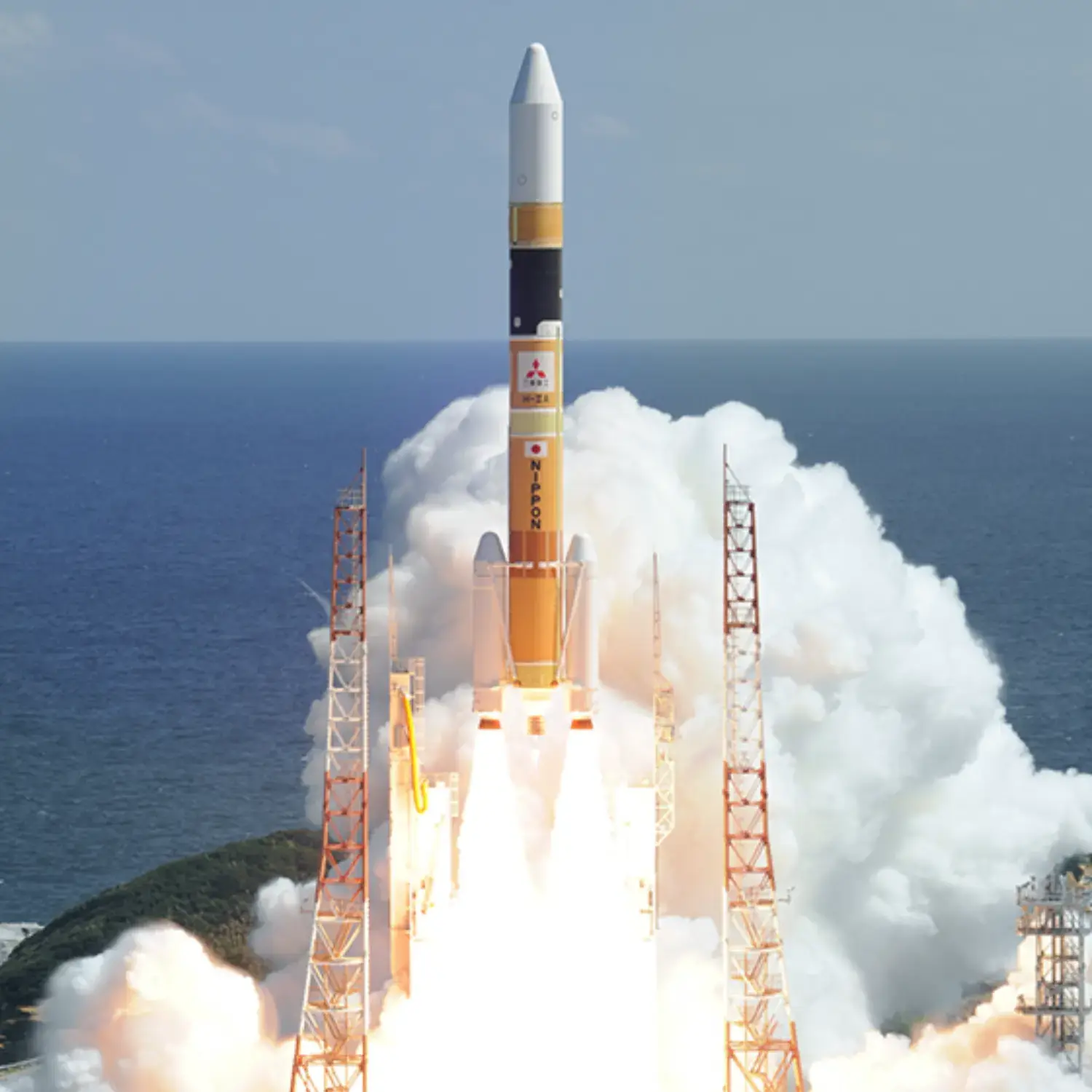/
Midori 2, WEOS & Others
Launch Success
Liftoff Time (GMT)
01:31:00
Saturday December 14, 2002
Mission Details
Midori 2
The ADEOS 2 (Advanced Earth Observation Satellite 2), also called Midori 2, is the satellite which took over ADEOS's observation mission of monitoring frequent climate changes occurring in the world, expansion of the ozone holes, and global environmental changes, as well as investigating the causes of these phenomena. ADEOS-II is equipped with two core sensors; AMSR for the observation of various physical content concerning water cycling regardless of day and night, and GLI for the observation of many field such as ocean, land and cloud with high precision, with the combination of other instruments such as Seawinds(NASA/JPL), POLDER(CNES), DCS(CNES), ILAS-II(EA). The ADEOS-II is expected to acquire the date necessary to understand the circulation of water and energy, and the circulation of carbon in order to contribute to study the global environment changes including seizing the mechanism of global environmental changes.
Sun-Synchronous Orbit
1 Payload
3,680 kilograms
WEOS
The WEOS (Whale Ecology Observation Satellite) project by Chiba Institute of Technology Japan won the IEIC Satellite Design Contest in 1993, and is subsequently being implemented. The satellite was launched as a piggyback payload on a H-2A-202 in 2002 into a LEO polar orbit. The spacecraft tracks whales using attached transponders which carries a data recorder for GPS position, sea temperature and depth. Data is transferred when the whale surfaces and the spacecraft is overhead. The spacecraft weighs 50 kg, and is a 50 cm cube. It carries an S-band antenna for TT&C, UHF antenna (near 400 MHz) for the link with the probe(s), and employs a 3 m gravity gradient boom to maintain Earth facing orientation.
Low Earth Orbit
1 Payload
50 kilograms
FedSat 1
FedSat (Federation Satellite) is an Australian scientific microsatellite mission, a 58 cm cube weighing approximately 50 kg. It was launched in late 2002 from Japan by Japan's National Space Development Agency. Its purposes are: - to establish Australian capability in microsatellite technologies; - to develop expertise necessary for sustaining those industries and profiting from them; - to test and develop Australian-developed intellectual property; - and to provide a research platform for Australian space-science, communication and GPS studies. FedSat is being developed by the Cooperative Research Centre for Satellite Systems, which combines the resources and skills of 12 Australian organisations. Contributions from each of the partner organisations are doubled by the Commonwealth Government, under its Commonwealth Government's Cooperative Research Centre's Program. The total budget of the Centre is approximately $60 million over 7 years, with $20 million of that allocated for the FedSat mission. Much of FedSat is being developed in Australia by the CRCSS. Three of the 6 main payloads have been fully developed by the CRCSS, and the other three have been supplied by overseas organisations in consultation with the CRCSS. The satellite platform, the structure that houses and maintains the payloads, is being provided by overseas organisations. CRCSS engineers could have developed an Australian platform, but given the time available from project-start to launch, that was not practical. So the CRCSS opted to contract an overseas platform supplier, avoiding the need to reinvent established technologies.
Low Earth Orbit
1 Payload
58 kilograms
µ-LabSat 1
µ-LabSat 1 is a technology mission with following objectives: - Test of 50 kg class small-sized satellite bus - Test of SELENE relay satellite separation mechanism - Remote inspection technology Experiment (RITE) µ-LabSat 1 released two tiny subsatellites in an experiment to test an onboard tracking imager for inspector satellites. The RITE targets are disks about 0.1 m in diameter. They were released from Micro-LabSat on 14 March 2003 and 14 May 2003.
Low Earth Orbit
1 Payload
68 kilograms
Launch Site
Stats
H-IIA
4th
Mission
3rd
Mission of 2002
2002
59th
Orbital launch attempt

